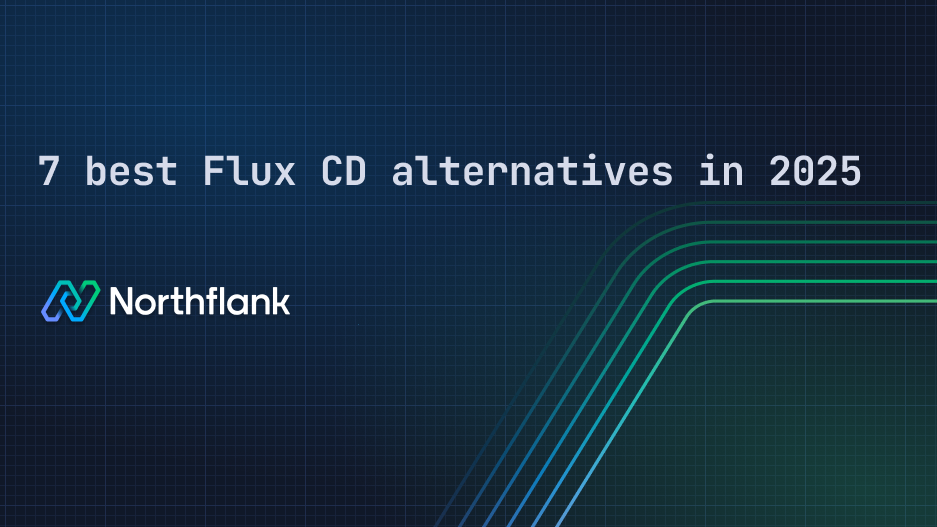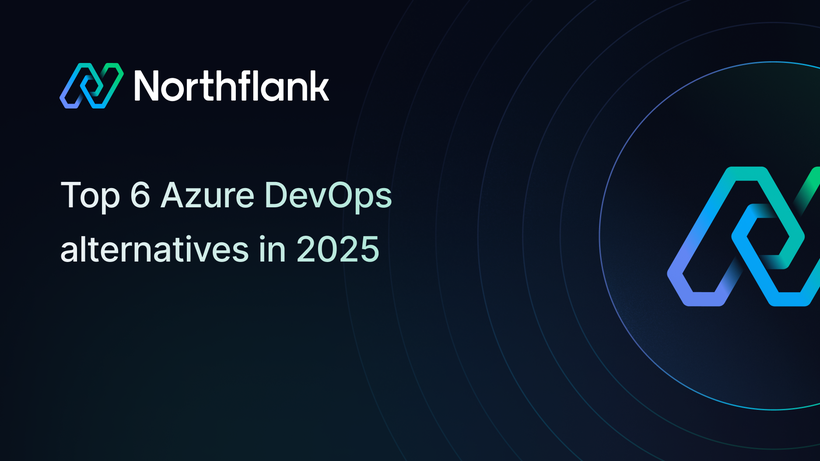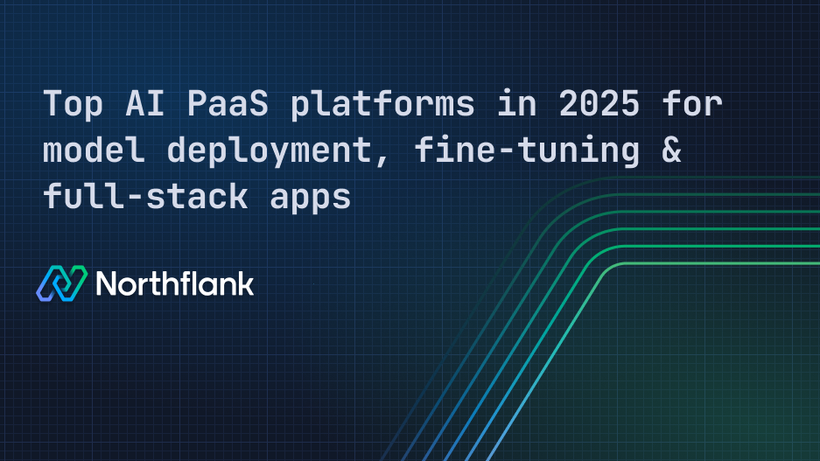

7 best Flux CD alternatives in 2025
When was the last time your team had to trace a deployment manually because Flux CD didn’t expose what was applied, when, or why it failed?
That kind of issue becomes more common as teams scale and need clearer visibility across environments.
Flux CD often works well for smaller setups. But as teams grow, the limitations become harder to ignore:
- No built-in UI to track sync status or changes
- Limited visibility across environments and clusters
- The ongoing effort of maintaining GitOps controllers as usage grows
You might’ve run into one of those recently.
And with Weaveworks (the company behind Flux) shutting down in 2024, even long-time users are questioning the project’s long-term future.
As one developer said:
“Flux is great for small and simple GitOps, but it doesn't scale well and lacks proper observability.” ~ reddit
So it’s no surprise that Flux CD alternatives are gaining traction. We’ll discuss seven (7) options that support GitOps workflows without the same maintenance burden or lack of visibility.
Let’s get into it.
In a hurry? Here's a quick breakdown of some of the best Flux CD alternatives for 2025:
-
Northflank – Git-based deploys, BYOC (Bring Your Own Cloud), built-in logs and rollback, no controller required.
-
Argo CD – Full GitOps controller with UI, Helm/Kustomize support, and strong community adoption.
-
Harness – Enterprise-grade CI/CD with GitOps pipelines, policy management, and visual workflows.
-
Spinnaker – Multi-cloud delivery platform with GitOps plugin support and fine-grained release strategies.
-
GitLab CI/CD – Git-based Kubernetes deploys via GitLab Agent, built-in UI, free and paid plans.
-
Jenkins X – Kubernetes-native GitOps automation, CLI-first, designed for Git-based multi-env delivery.
-
Codefresh – SaaS GitOps platform built on Argo with rollout tracking and dashboard visibility.
Before we get into the alternatives, let’s quickly go over the factors worth considering. You might have done a bit of research and seen that there’s no shortage of GitOps tools out there, but not all of them are built the same.
Some require you to install and manage your own controllers. Others give you the same Git-based workflows without needing to touch that layer at all.

So, let’s look at a few things to think about before going for a Flux CD alternative:
-
Do you want to manage a GitOps controller, or would you rather skip that step entirely?
Some tools expect you to operate and maintain a controller like Flux or Argo. Others like Northflank or Codefresh handle that under the hood, so you don’t need to deal with CRDs (Custom Resource Definitions) or reconciliation logic yourself.
-
Do you need a UI with logs, diffs, and rollback features?
CLI-first might work early on, but teams often need better visibility once more people are involved or things start to break. Tools like Northflank provide a UI that is out of the box, making it easier to troubleshoot and manage deployments without digging through terminal logs.
-
Is self-hosting a requirement, or is a SaaS (or BYOC) acceptable?
Depending on your infra policies, you might need something you can run in your own cloud, or you might prefer not to host anything at all. Platforms like Northflank support Bring Your Own Cloud (BYOC), giving you control over where workloads run without managing the control plane yourself.
-
Do you care about open source vs enterprise support?
Open source tools give you full control and flexibility, but they often come with the tradeoff of managing everything yourself. On the other hand, enterprise platforms tend to include support, SLAs, and team-ready features, things that matter more as your usage grows or requirements tighten.
-
Is CI/CD integration important, or are you only focused on CD?
Some tools are GitOps-only. Others like Northflank or Harness include built-in CI or integrate closely with your pipelines, so you don’t have to manually integrate multiple tools to ship changes.
Now that we’ve broken down the key things to consider, let’s do a quick side-by-side look at how each alternative measures against the key things we just covered.
It isn’t just a feature checklist; it’s a practical view of what each tool expects from you and what it gives your team out of the box.
We’re comparing based on:
- GitOps-native: If Git-based deploys are built into the core design.
- Deployment model: Self-hosted, SaaS, or BYOC.
- Controller-free: If you need to manage a GitOps controller or not.
- Developer interface: CLI, UI, or both.
- Pricing: Free, open source, or commercial.
So, use this table to get a quick sense of where each tool sits, then jump into the detailed breakdowns to see which one fits your stack best.
| Tool | GitOps-native | Deployment model | Controller-free | Developer interface | Pricing |
|---|---|---|---|---|---|
| Northflank | Yes | SaaS / BYOC | Yes | UI + CLI | Free tier, paid plans |
| Argo CD | Yes | Self-hosted | No | UI + CLI | Open source |
| Harness | Yes | SaaS | Yes | UI | Commercial, usage-based |
| Spinnaker | Partially | Self-hosted | No | UI | Open source |
| GitLab CI/CD | Partially | SaaS / Self-hosted | Yes (via agent) | UI + YAML pipelines | Free & paid tiers |
| Jenkins X | Yes | Self-hosted | No | CLI | Open source |
| Codefresh | Yes | SaaS | No (built on Argo) | UI | Commercial, with free tier |
If the comparison table helped you narrow things down, this section will give you a deeper look at each tool. We’ll go into what each tool is built for, how it works in practice, and when it makes sense to use.
We’re covering both open-source GitOps tools and platform-based options, depending on how much control or abstraction your team is looking for. They all support GitOps workflows but differ in how much infrastructure setup, controller management, and operational complexity they expect you to take on.
Let’s break them down one by one.
If your team spends too much time managing Flux controllers, troubleshooting sync issues, or working without a clear view of what's actually deployed, Northflank removes all of that operational complexity.
Northflank gives you Git-based deployments, container builds, and preview environments, without needing to install or maintain a GitOps controller. Every deployment is tied to your Git history, with built-in logs, diff views, and rollback support that’s ready from day one.

You also get:
- A clean UI for managing services, jobs, secrets, and environments
- Bring Your Own Cloud (BYOC) support for running workloads in your own infrastructure
- Support for persistent storage, background jobs, and custom Docker builds
- Deployment workflows without CRDs, sync loops, or controller maintenance
Compared to Flux CD, there are no CRDs to define, reconciliation loops to monitor, or controllers to debug. Northflank handles orchestration under the hood, giving your team a cleaner, more reliable deployment workflow.
Go with this if you want GitOps workflows without managing a controller, and you care about visibility, rollback support, secrets management, and control over where and how your services run.
See how Weights company uses Northflank to scale to millions of users without a DevOps team
One of the biggest challenges with Flux CD is the lack of built-in visibility. If your team needs a UI to understand what’s deployed, what’s out of sync, and why something failed, Argo CD solves that out of the box.

Argo CD is a self-managed GitOps controller designed specifically for Kubernetes. It continuously syncs application state from Git and provides a dashboard where you can see every deployment, compare desired vs actual state, and troubleshoot sync issues without relying solely on CLI tools.
It supports:
- GitOps workflows with Helm, Kustomize, plain YAML, and Jsonnet
- Automated sync and manual approval strategies
- RBAC, audit logs, and SSO integrations
- Multi-cluster deployment management
Where Flux expects you to work mostly through the CLI, Argo provides a full visual layer for inspecting and managing deployments. You’ll still be responsible for hosting and maintaining the controller, but the experience around it is more structured and easier to work with.
Choose this if your team wants an open-source GitOps setup with a built-in UI and clearer control across multiple clusters.
See Flux vs Argo CD: Which GitOps tool fits your Kubernetes workflows best? and Argo CD alternatives
If you’ve tried combining GitOps with feature flags, RBAC, or policy enforcement in Flux CD, you’ve likely had to integrate multiple tools manually. Harness includes these capabilities natively within its CI/CD platform.
Harness includes a GitOps module alongside full CI/CD pipelines, audit trails, and governance features. You can trigger deployments from Git commits, define automated rollout strategies, and connect your GitOps workflows to security and compliance policies.

What it supports:
- Declarative GitOps pipelines with drift detection
- Policy-as-code using Open Policy Agent (OPA)
- Deployment strategies like canary, blue/green, and rolling
- Built-in CI engine, feature flags, and service catalog
- Centralized management across microservices and teams
Compared to Flux CD, Harness doesn’t require you to manage the GitOps engine. But it’s also not open source and comes with commercial pricing, which might not suit every team.
Use Harness if you want a managed GitOps workflow with policy enforcement, governance, and deeper integrations across your delivery pipeline.
See Top alternatives to Harness for CI/CD and DevOps
Flux CD is great for syncing manifests to a Kubernetes cluster, but it’s limited when your deployments span multiple clouds or require more advanced orchestration. That’s where Spinnaker comes in.
Originally built by Netflix, Spinnaker is a multi-cloud continuous delivery platform that supports Kubernetes, EC2, GCE, ECS, and more. It’s not GitOps-first by design, but it can be extended with GitOps plugins to pull deployment configs from Git and automate rollouts.

Where it fits well:
- Multi-target, multi-cloud deployment pipelines
- Custom deployment workflows across services
- Integration with GitHub, Bitbucket, Jenkins, and more
- Fine-grained release controls with automated promotion and rollback
- Open-source core, with managed options like Armory available
It’s a heavier install than Flux and often overkill for smaller teams. But if you’re delivering to multiple cloud providers and want GitOps to be one part of a larger deployment strategy, Spinnaker offers that scope.
Choose Spinnaker if you're operating across cloud environments and need a broader delivery system that can be extended with GitOps.
See 9 best Spinnaker alternatives in 2025
If your code, issues, and pipelines already live in GitLab, adding GitOps with the Kubernetes Agent can be a natural extension, without introducing another controller.
GitLab CI/CD isn’t a traditional GitOps engine, but it supports Git-based deploys through pipelines and its Kubernetes Agent. You can store manifests in your repo and trigger cluster changes based on pipeline events, merge requests, or tags.

Why it works well:
- Built-in Git-native CI/CD pipelines
- Kubernetes Agent for pull-based GitOps sync
- Merge request-based deployments and diff previews
- Role-based permissions and audit logs baked in
- SaaS and self-hosted deployment models available
Unlike Flux, you don’t get a continuously reconciling controller, but for many teams, GitLab’s event-driven deploys are more than enough.
This is a good match if your team already uses GitLab and wants GitOps-style deployments without adding another tool to manage.
See 9 Best GitLab alternatives for CI/CD in 2025
Jenkins X aims to bring GitOps to CI/CD workflows with a Kubernetes-native approach, but it’s not the same as using classic Jenkins.
Built from the ground up for cloud-native apps, Jenkins X creates preview environments, automates promotion through Git pull requests, and runs CI/CD pipelines using Tekton. It stores everything in Git, from build outputs to environment configs.

What it includes:
- GitOps-based environment promotion and version tracking
- Kubernetes-native pipelines via Tekton
- Integration with Helm, Kustomize, and Docker builds
- CLI-driven experience with automation around pull requests
- Focus on microservice and team-based delivery flows
There’s no dashboard or visual UI, and it takes effort to set up and manage. But for teams that want GitOps integrated into every step of the delivery process and are comfortable working through Git and CLI, Jenkins X provides automation that’s tightly aligned with Kubernetes workflows.
Use Jenkins X if you want GitOps-first pipelines and don’t mind working without a UI.
If your team likes the Argo CD model but needs something more enterprise-ready out of the box, Codefresh builds on top of Argo to give you a managed GitOps platform with more insight and control.
Codefresh uses Argo under the hood but adds visual dashboards, drift detection, service-level views, and release tracking across environments. It supports multi-cluster delivery and integrates tightly with Helm, Kustomize, and Terraform.

Key features:
- GitOps workflows powered by Argo CD
- Unified dashboard to track deployments across services
- Built-in audit logging, RBAC, and policy enforcement
- Rollback history and deployment metrics
- SaaS model, with multi-cluster and multi-tenant support
You’ll still be using an Argo-style controller behind the scenes, but Codefresh saves you from managing it directly and adds layers of visibility and automation that Argo doesn’t provide by default.
Codefresh is a reliable choice if you want Argo’s capabilities without the maintenance, and need a central UI to track everything from Git to production.
Now that you’ve seen what each tool can do, it comes down to which one fits best with your team’s workflow, infrastructure, and priorities.
Some tools give you full control but expect you to host and maintain the GitOps engine yourself. Others abstract that layer away, so you don’t have to manage controllers or define custom resources.
Let’s see a quick breakdown based on what your team might be optimizing for:
-
Prefer self-hosted and open source?
Argo CD and Jenkins X are both GitOps-native, Kubernetes-focused, and give you full control over your deployment logic and infrastructure.
-
Want Git-based workflows without maintaining controllers?
Northflank and Codefresh provide GitOps without the operational cost of running your own controller, with built-in dashboards and automation.
-
Need policy enforcement, compliance, or enterprise-grade features?
Harness and Spinnaker support advanced deployment strategies, RBAC, audit logging, and centralized governance features out of the box.
-
Already using GitLab across your stack?
GitLab CI/CD can integrate GitOps-style deployments into your existing pipeline setup without adding another tool to manage.
Each of these GitOps tools makes different trade-offs between control, convenience, and setup time, so the right choice depends on how your team wants to deploy, operate, and scale.
If you're still deciding or presenting options to your team, see some quick answers to common questions about Flux CD and the tools that come up around it.
-
What is the alternative to Flux CD?
There’s no one-size-fits-all replacement, but tools like Northflank, Argo CD, and Codefresh come up most often. Your choice depends on whether you want to self-host and manage a GitOps controller or use a platform that handles that layer for you.
-
Which is better, Flux or Argo CD?
Both are open-source GitOps controllers, but Argo CD includes a built-in UI, clearer observability, and broader adoption, especially in enterprise settings. Flux CD is lighter and more CLI-driven. We’ve broken this down in detail here.
-
What are the pros and cons of Flux CD?
Pros: lightweight, flexible, works well with plain YAML, Helm, and Kustomize.
Cons: no built-in UI, limited visibility, controller management overhead, and less adoption compared to Argo CD.
-
Does Flux CD have a UI?
No. Flux CD does not include a native UI. You’ll need to rely on CLI tools or integrate with third-party dashboards. That’s one of the reasons teams move to alternatives like Argo CD, Northflank, or Codefresh.
-
What is the difference between Argo CD and Flux?
Both sync your cluster state from Git, but Argo CD is more feature-complete out of the box. It comes with a UI, multi-cluster support, RBAC, and automated sync strategies. Flux is more modular, but that also means more manual setup and additional tools if you want similar capabilities.
If you’ve read up to this point, it means you’ve seen what else is out there and now have a clearer view of which Flux CD alternative might fit your team better.
We’ve looked at tools that give you full control over how deployments happen, like Argo CD and Jenkins X, and platforms that remove the need to manage controllers entirely, like Northflank and Codefresh. Each one solves a slightly different problem depending on how much infrastructure your team wants to manage and how much visibility and control you need.
If you’re unsure where to start, you can create a free account on a platform like Northflank and see how it handles Git-based deployments without asking you to install or maintain a controller. You get a UI, CLI, or API to work with, depending on what fits your team’s workflow, and it gives you a clearer view of how deployments are triggered, tracked, and rolled back across environments.

